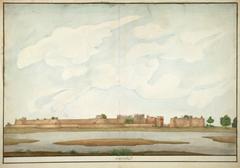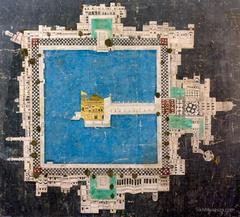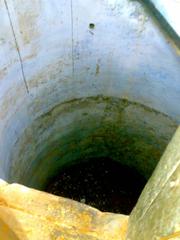
Comprehensive Guide to Visiting Amritsar, Amritsar District, India
Date: 13/08/2024
Captivating Introduction
Welcome to Amritsar, the enchanting ‘City of Nectar’ that promises a journey through time, spirituality, and vibrant culture. Imagine stepping into a city where every corner whispers tales of valor, sacrifice, and unity, a place where the past and present merge seamlessly. Amritsar, founded in 1577 by Guru Ram Das, the fourth Sikh Guru, is a city steeped in history and tradition. Its name, derived from the sacred pool ‘Amrit Sarovar,’ symbolizes the nectar of immortality and sets the tone for the city’s spiritual ambiance (Planet Amritsar). At the heart of Amritsar stands the Golden Temple, also known as Harmandir Sahib, a beacon of peace and resilience that has been drawing pilgrims and tourists alike for centuries. This gilded marvel is not just a religious site but a symbol of inclusivity and equality, embodying the spirit of Sikhism (High Flags). But Amritsar is more than its historical landmarks; it is a vibrant tapestry of culture, cuisine, and traditions. From the high-energy Wagah Border Ceremony to the bustling lanes of Hall Bazaar, Amritsar offers a sensory overload that is both exhilarating and humbling. The city comes alive during festivals like Baisakhi and Diwali, where music, dance, and joyous celebrations dominate the atmosphere (Indian Visit). Whether you’re a history buff, a spiritual seeker, or a foodie, Amritsar has something to offer. So, put on your walking shoes, download the Audiala app, and get ready to explore the hidden gems and untold stories of this incredible city. Trust me, you won’t regret it!
Table of Contents
- [History of Amritsar](#history-of-amritsarhistory-of-amritsar)
- [Founding and Early Development](#founding-and-early-developmentfounding-and-early-development)
- [The Golden Temple: A Shimmering Beacon](#the-golden-temple-a-shimmering-beaconthe-golden-temple-a-shimmering-beacon)
- [The Rise of the Sikh Empire: A Fortress of Strength](#the-rise-of-the-sikh-empire-a-fortress-of-strengththe-rise-of-the-sikh-empire-a-fortress-of-strength)
- [British Colonial Period: A Time of Turmoil](#british-colonial-period-a-time-of-turmoilbritish-colonial-period-a-time-of-turmoil)
- [Partition and Aftermath: A City Divided](#partition-and-aftermath-a-city-dividedpartition-and-aftermath-a-city-divided)
- [Modern Amritsar: A Cultural Tapestry](#modern-amritsar-a-cultural-tapestrymodern-amritsar-a-cultural-tapestry)
- [Key Historical Sites: Hidden Treasures](#key-historical-sites-hidden-treasureskey-historical-sites-hidden-treasures)
- [Jallianwala Bagh](#jallianwala-baghjallianwala-bagh)
- [Wagah Border](#wagah-borderwagah-border)
- [Gobindgarh Fort](#gobindgarh-fortgobindgarh-fort)
- [Pul Kanjari](#pul-kanjaripul-kanjari)
- [Cultural Significance: A Vibrant Hub](#cultural-significance-a-vibrant-hubcultural-significance-a-vibrant-hub)
- [Visitor Tips: Insider Advice](#visitor-tips-insider-advicevisitor-tips-insider-advice)
- [Key Attractions](#key-attractionskey-attractions)
- [The Golden Temple (Harmandir Sahib)](#the-golden-temple-harmandir-sahibthe-golden-temple-harmandir-sahib)
- [Jallianwala Bagh](#jallianwala-baghjallianwala-bagh-1)
- [Wagah Border Ceremony](#wagah-border-ceremonywagah-border-ceremony)
- [Partition Museum](#partition-museumpartition-museum)
- [Durgiana Temple](#durgiana-templedurgiana-temple)
- [Maharaja Ranjit Singh Museum](#maharaja-ranjit-singh-museummaharaja-ranjit-singh-museum)
- [Gobindgarh Fort](#gobindgarh-fortgobindgarh-fort-1)
- [Akal Takht](#akal-takhtakal-takht)
- [Mata Lal Devi Temple](#mata-lal-devi-templemata-lal-devi-temple)
- [Hall Bazaar](#hall-bazaarhall-bazaar)
- [Ram Bagh Gardens](#ram-bagh-gardensram-bagh-gardens)
- [Baba Atal Tower](#baba-atal-towerbaba-atal-tower)
- [Gurudwara Chheharta Sahib](#gurudwara-chheharta-sahibgurudwara-chheharta-sahib)
- [Street Food](#street-foodstreet-food)
- [Khalsa College](#khalsa-collegekhalsa-college)
- [Goindwal Baoli](#goindwal-baoligoindwal-baoli)
- [Gurudwara Mata Kaulan](#gurudwara-mata-kaulangurudwara-mata-kaulan)
- [Seasonal Highlights](#seasonal-highlightsseasonal-highlights)
- [Visitor Tips for Amritsar](#visitor-tips-for-amritsarvisitor-tips-for-amritsar)
- [Best Time to Visit](#best-time-to-visitbest-time-to-visit)
- [Cultural Etiquette and Practices](#cultural-etiquette-and-practicescultural-etiquette-and-practices)
- [Navigating the City](#navigating-the-citynavigating-the-city)
- [Culinary Delights](#culinary-delightsculinary-delights)
- [Key Attractions](#key-attractionskey-attractions-1)
- [Shopping](#shoppingshopping)
- [Accommodation](#accommodationaccommodation)
- [Safety Tips](#safety-tipssafety-tips)
- [Language and Communication](#language-and-communicationlanguage-and-communication)
- [Festivals and Events](#festivals-and-eventsfestivals-and-events)
- [Emergency Contacts](#emergency-contactsemergency-contacts)
- [Call to Action](#call-to-actioncall-to-action)
Welcome to Amritsar: The City of Nectar
Founding and Early Development
Amritsar, a city in the northwestern part of India, was founded in 1577 by Guru Ram Das, the fourth Sikh Guru. Initially known as ‘Ramdaspur,’ it was built around a sacred pool, which was later named ‘Amritsar’ or ‘Pool of Nectar’ (Planet Amritsar). This pool, excavated by Guru Ram Das, holds significant importance for the Sikh community as its waters were believed to have healing properties—a blessing from the third Sikh Guru, Guru Amar Das.
The Golden Temple: A Shimmering Beacon
One of the most iconic landmarks of Amritsar is the Golden Temple, also known as Harmandir Sahib. Constructed in the 16th century, this magnificent shrine became the heart of Sikhism. Its gilded dome and serene surroundings attract millions of visitors annually. The temple stands as a symbol of inclusivity, equality, and spiritual unity (High Flags). The foundation stone of the Golden Temple was laid by Sai Mir Mian Mohammad in 1589, built around the man-made lake created by Guru Ram Das in 1577 (Travel India). Feel the cool marble beneath your feet and hear the melodic hymns sung by devout Sikhs—it’s an experience that engages all your senses.
The Rise of the Sikh Empire: A Fortress of Strength
Amritsar’s prominence grew significantly in the early 19th century when the Sikh Empire under Maharaja Ranjit Singh took control of the region. Recognizing the strategic importance of the city, Singh invested heavily in fortifying its defenses, including the construction of the Ramgarhia Bunga fortress (Planet Amritsar). During this period, the Golden Temple was reconstructed in marble and copper, later overlaid with gold foil in 1830, which led to its name – the Golden Temple (Fab Hotels).
British Colonial Period: A Time of Turmoil
During the British colonial era, Amritsar played a pivotal role in shaping India’s history. The Jallianwala Bagh massacre of 1919 stands as a tragic episode. British troops opened fire on a peaceful gathering in Jallianwala Bagh, leading to numerous casualties. This event fueled India’s struggle for independence and galvanized the nation against colonial oppression (High Flags). The garden, located near the Golden Temple, serves as a poignant memorial to the massacre (The Indosphere).
Partition and Aftermath: A City Divided
The year 1947 marked a significant turning point in Amritsar’s history due to the partition of India. The city witnessed mass migrations and communal tensions during this period. The division of Punjab resulted in the relocation of many families and the creation of the Wagah Border, a significant crossing point between India and Pakistan (High Flags). The Wagah Border is now famous for the Beating Retreat Ceremony, a daily military practice that attracts numerous visitors (Fab Hotels).
Modern Amritsar: A Cultural Tapestry
In modern times, Amritsar continues to thrive as a dynamic city. Its cultural diversity is evident in its cuisine, festivals, and traditions. The city’s economy has expanded to include trade, agriculture, and tourism, attracting visitors from across the globe to experience its historical and spiritual treasures (High Flags). The Golden Temple remains a beacon of spiritual enlightenment, welcoming people of all backgrounds.
Key Historical Sites: Hidden Treasures
Jallianwala Bagh
Jallianwala Bagh holds great historical significance and stands as a sobering reminder of the tragic event that unfolded on April 13, 1919. This enclosed public garden serves as a poignant memorial to the Jallianwala Bagh massacre (The Indosphere).
Wagah Border
The Wagah Border offers a unique glimpse into the relationship between India and Pakistan, showcasing both camaraderie and patriotism. The Partition Museum chronicles the tragic division of India and the personal stories of those affected, promoting understanding and unity (Tourist Secrets).
Gobindgarh Fort
Discover the rich military history of Punjab at the Gobindgarh Fort, where you can witness thrilling performances and explore the various museums inside the fort (Tourist Secrets).
Pul Kanjari
Pul Kanjari is a historical village with a poignant love story attached to it. It is located about 35 kilometers from Amritsar and can be reached by taxi or auto-rickshaw (The Indosphere).
Cultural Significance: A Vibrant Hub
Amritsar is not just a city of historical landmarks but also a vibrant cultural hub. The city comes alive during festivals such as Baisakhi, Diwali, and Hola Mohalla, where music, dance, and joyous celebrations dominate the atmosphere (Indian Visit). The warmth and hospitality of the locals make visitors feel right at home.
Visitor Tips: Insider Advice
When visiting Amritsar, it’s important to dress modestly, especially when visiting religious sites. It’s a good idea to remove your shoes and cover your head before entering any gurudwara or temple. Be prepared for the crowds, especially at popular tourist spots like the Golden Temple and Jallianwala Bagh. And don’t forget to try the local cuisine, which is famous for its rich flavors and unique blend of spices (Travel Kismat).
Key Attractions in Amritsar
Introduction
Welcome to Amritsar, where history, spirituality, and vibrant culture blend to create a city like no other. Imagine starting your day with the golden glow of the Harmandir Sahib reflecting in the Amrit Sarovar, and ending it with the high-energy Wagah Border Ceremony. Let’s take a journey through Amritsar’s must-see spots, with a twist of local secrets and sensory delights!
The Golden Temple (Harmandir Sahib)
The Golden Temple, or Harmandir Sahib, is not just a sight for sore eyes; it’s a spiritual oasis. Picture the golden façade shimmering in the water, the hum of prayers, and the warmth of free langar (community meal) that serves thousands daily. Pro tip: Visit during the early morning or late evening to witness the temple in all its ethereal beauty. And don’t forget to try the karah prasad—it’s divine!
Jallianwala Bagh
This serene garden holds a somber past. Imagine standing by the bullet-marked walls and the Martyrs’ Well, where countless brave souls sought refuge. The air here is heavy with history, a poignant reminder of India’s struggle for independence. It’s not just a visit; it’s an emotional journey.
Wagah Border Ceremony
Just 28 kilometers from Amritsar, the Wagah Border Ceremony is a spectacle of patriotism and pageantry. Feel the ground vibrate with synchronized marching and the roar of the crowd. It’s a daily ritual of rivalry and camaraderie, best experienced with a hearty cheer and a flag in hand. Insider tip: Arrive early for the best seats and bring a hat for shade!
Partition Museum
Step into the Partition Museum for a deeply moving experience. The exhibits here—photos, letters, personal belongings—tell the harrowing tales of the 1947 Partition. It’s not just a museum; it’s a tribute to resilience and hope. Look out for the interactive screens that let you delve deeper into individual stories.
Durgiana Temple
Often overshadowed by its golden cousin, the Durgiana Temple is a gem in its own right. With its golden dome and sacred water tank, it offers a tranquil retreat. The temple complex also houses shrines dedicated to Lord Vishnu and Lord Krishna. Visit during festivals for a splash of color and a burst of local flavor.
Maharaja Ranjit Singh Museum
Nestled in the lush Ram Bagh Gardens, this museum offers a peek into the opulent life of the Lion of Punjab. Marvel at the artifacts, from glittering armor to intricate paintings. The gardens themselves are perfect for a leisurely stroll or a quiet picnic. Fun fact: The palace was once a summer retreat for the Maharaja!
Gobindgarh Fort
Once a mighty military fort, Gobindgarh is now a cultural hotspot. Explore the fort’s history through multimedia shows, live performances, and interactive exhibits. Don’t miss the Phulkari bazaar for some local crafts and the delicious street food stalls. It’s history served with a side of fun.
Akal Takht
The Akal Takht stands as a symbol of justice and sovereignty within the Golden Temple complex. Established by Guru Hargobind, it’s a seat of power in Sikhism. The atmosphere here is charged with reverence and authority. Attend a session if you can; it’s an insightful peek into Sikh governance.
Mata Lal Devi Temple
Step into a world of mirrors and vibrant decorations at Mata Lal Devi Temple. Known as Sheesh Mahal, it’s a kaleidoscope of colors and reflections. Believed to have miraculous powers, this temple is a mini-version of the Vaishno Devi temple. It’s a sensory overload that’s both spiritually uplifting and visually stunning.
Hall Bazaar
Dive into the bustling lanes of Hall Bazaar, where you can shop till you drop. From electronics to ethnic wear, this market has it all. The Mughal-style gate with its giant clock is an iconic landmark. Don’t leave without sampling the street food—think spicy chaat, crispy jalebis, and refreshing lassi.
Ram Bagh Gardens
Named after Guru Ram Das, these gardens are a green haven in the city. The summer palace within the gardens has been converted into a museum, offering a glimpse into the life of Maharaja Ranjit Singh. It’s a perfect spot for a leisurely walk or a family picnic. During spring, the gardens burst into a riot of colors!
Baba Atal Tower
Climb up the nine-story Baba Atal Tower for breathtaking panoramic views of Amritsar. This octagonal marvel is dedicated to Atal Rai, the son of Guru Hargobind. Legend has it that he performed a miracle by bringing someone back to life. The tower is a blend of history, architecture, and spirituality.
Gurudwara Chheharta Sahib
Named after a well with six Persian wheels, this Gurudwara is a testament to abundance and devotion. The lotus dome and the sanctum in the middle of the diwan hall are architectural delights. It’s a serene spot for meditation and reflection. Visit during gurpurabs for a truly festive atmosphere.
Street Food
Amritsar’s street food is a culinary adventure. Indulge in Amritsari Kulcha, Tandoori Chicken, Jalebis, and Lassi. The flavors here are robust, the spices bold. Wander through the streets and let your nose guide you to the nearest food stall. Each bite is a burst of flavor and tradition.
Khalsa College
Established in 1892, Khalsa College is a blend of Mughal and Sikh architectural styles. The red-brick building is a sight to behold, especially during sunset. The sprawling campus includes lush gardens and sports facilities. It’s not just an educational institution; it’s a landmark of Amritsar’s rich heritage.
Goindwal Baoli
This historic stepwell, built by Guru Amar Das, is a spiritual retreat. With 84 steps leading down to the water, it’s believed that reciting the Japji Sahib on each step can lead to spiritual liberation. It’s a serene spot for meditation and offers a glimpse into the architectural brilliance of the time.
Gurudwara Mata Kaulan
Named after Bibi Kaulan, this Gurudwara is a serene escape near the Golden Temple. The tranquil pool and the beautiful architecture make it a perfect spot for reflection. It’s a lesser-known gem that offers solace and spiritual rejuvenation.
Seasonal Highlights
Amritsar transforms with the seasons. Visit during Baisakhi for vibrant celebrations and cultural performances. In winter, the city is wrapped in a cozy blanket of fog, perfect for enjoying hot chai and crispy pakoras. Each season brings a new charm to this timeless city.
Discover Amritsar: Your Ultimate Insider’s Guide
BestTime to Visit
Ah, Amritsar! The city that dances to the tunes of tradition and history. If you want to experience its vibrant spirit, visit during October and November when the weather is as pleasant as a Punjabi’s hospitality. For a burst of colors and joy, April’s Baisakhi festival is a must-see. The city turns into a carnival of music, dance, and celebrations. Trust me, you wouldn’t want to miss it (source).
Cultural Etiquette and Practices
In Amritsar, respecting local customs is as essential as enjoying the food. When visiting the Golden Temple, remember these golden rules:
- Dress Code: Think modest. Cover your head, avoid sleeveless tops, and shorts are a no-no.
- Footwear: Leave your shoes at the door. Literally. There are spots to store them safely.
- Cleanliness: Wash up! Clean hands and feet are a must before entering.
- Behavior: Keep it zen. Silence and minimal phone use are key. Always ask before snapping pics (source).
Navigating the City
Amritsar is like a rich thali, each experience adding a unique flavor. Here’s how to navigate this spicy city:
- Public Transport: Buses and auto-rickshaws are your everyday friends. Cycle rickshaws are perfect for short, scenic rides.
- Taxis and Ride-Sharing: Ola and Uber are at your service for a comfy ride.
- Walking Tours: Join the Amritsar Heritage Walk and let your feet take you on a journey through history and culture (source).
Culinary Delights
Taste the soul of Amritsar with its scrumptious dishes:
- Amritsari Kulcha: Stuffed bread with spiced potatoes, served with chickpea curry. Yum!
- Butter Chicken: Creamy, mildly spiced chicken that’s a Punjabi staple.
- Makki di Roti and Sarson da Saag: Cornmeal flatbread with mustard greens curry. A winter favorite!
- Amritsari Fish: Deep-fried, spiced fish that’s crispy perfection.
- Lassi: Cool off with this traditional yogurt drink, often flavored with cardamom or rose water (source).
Key Attractions
Explore Amritsar’s iconic landmarks with these tips:
- Golden Temple (Harmandir Sahib): The heart of Sikhism, radiating peace and resilience since 1604 A.D. (source).
- Jallianwala Bagh: A garden that whispers tales of the 1919 massacre. Reflect on history’s lessons (source).
- Wagah Border: Witness the daily, spirited border ceremony. It’s a spectacle of national pride (source).
- Gobindgarh Fort: History meets entertainment with museums, performances, and 7D shows (source).
- Partition Museum: Dive into the poignant stories of the 1947 partition (source).
Shopping
Shopping in Amritsar is an adventure in itself:
- Hall Bazaar: Electronics, books, handicrafts, and quality woolens. It’s a shopper’s paradise (source).
- Katra Jaimal Singh Bazaar: Textile heaven, especially for traditional Punjabi suits.
- Guru Bazaar: Jewelry lovers, this is your spot for gold and silver treasures.
Accommodation
From luxury to budget, Amritsar has it all:
- Luxury Hotels: Hyatt Regency and Taj Swarna for premium comfort.
- Mid-Range Hotels: Ramada Amritsar and Fairfield by Marriott for a blend of comfort and affordability.
- Budget Hotels: Hotel Hong Kong Inn and Hotel City Park for frugal yet comfy stays (source).
Safety Tips
Stay safe and enjoy your trip with these tips:
- Stay Alert: Be aware, especially in crowded places.
- Avoid Late-Night Travel: Better safe than sorry, avoid solo late-night adventures.
- Secure Belongings: Keep an eye on your stuff, especially in bustling areas.
- Health Precautions: Drink bottled water and eat at reputable places to avoid any tummy troubles.
Language and Communication
Punjabi, Hindi, and English are your language buddies here. Most locals speak basic English, making communication easier. A few Punjabi phrases can go a long way in winning hearts.
Festivals and Events
Don’t miss Amritsar’s vibrant festivals:
- Baisakhi: April’s harvest festival, marking the Punjabi New Year. Think music, dance, and colorful parades.
- Diwali: Festival of lights. Homes and streets glow with lamps and fireworks.
- Hola Mohalla: Sikh festival with mock battles, martial arts, and religious processions (source).
Emergency Contacts
Keep these numbers handy:
- Police: 100
- Ambulance: 102
- Fire Brigade: 101
- Tourist Helpline: 1363
Call to Action
Ready to explore Amritsar like a local? Download Audiala, the ultimate tour guide app that brings the city’s secrets to your ears. With in-depth audio guides and insider tips, Audiala ensures you don’t miss a beat of Amritsar’s magic. Embark on your adventure now and let Audiala be your trusty companion in this incredible journey!
By following these tips, you’re all set for a safe, fun, and unforgettable experience in Amritsar.
Call to Action
As your journey through Amritsar comes to an end, it’s clear that this city is more than just a destination; it’s an experience that leaves an indelible mark on the soul. From the serene waters of the Golden Temple to the bustling streets filled with the aroma of Amritsari Kulcha, every moment in Amritsar is a celebration of life, history, and spirituality. The city’s resilience, seen in its rise from the tragedies of the Jallianwala Bagh massacre to its vibrant present, is a testament to the indomitable spirit of its people (High Flags). Amritsar’s unique blend of the old and new makes it a living, breathing tapestry of stories waiting to be discovered. So, as you pack your bags and bid adieu to this incredible city, remember to carry a piece of Amritsar with you—be it in the form of memories, flavors, or newfound wisdom. And for those yet to embark on this journey, let the Audiala app be your guide, offering beautifully crafted audio guides that ensure you don’t miss a beat of Amritsar’s magic. Download Audiala and unlock the secrets, stories, and splendor of Amritsar, making your visit not just a trip, but an unforgettable adventure (Fab Hotels).
References
- Planet Amritsar. (n.d.). History of Amritsar: All you need to know. source
- High Flags. (n.d.). A brief history of Amritsar city from its origins to modern times. source
- Travel India. (n.d.). Popular historical places in Amritsar. source
- Fab Hotels. (n.d.). Historical places in Amritsar. source
- The Indosphere. (n.d.). Top 10 places to visit in Amritsar. source
- Tourist Secrets. (n.d.). What to see in Amritsar: Walking through history in the Punjab. source
- Indian Visit. (n.d.). Amritsar travel guide. source
- Travel Kismat. (n.d.). Amritsar. source
- Audiala. (n.d.). Discover Amritsar: Your ultimate insider’s guide. source
- The Culture Trip. (n.d.). The top 10 things to see and do in Amritsar. source
- The Wandering Core. (n.d.). Places to visit in Amritsar, Punjab. source


















